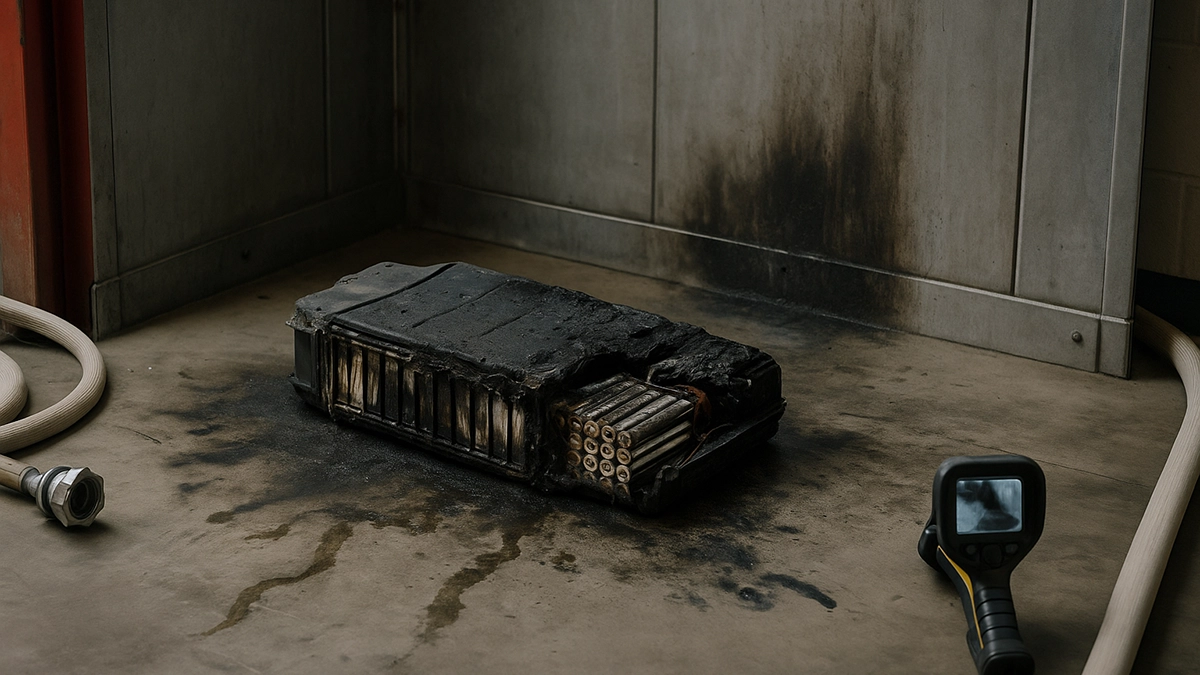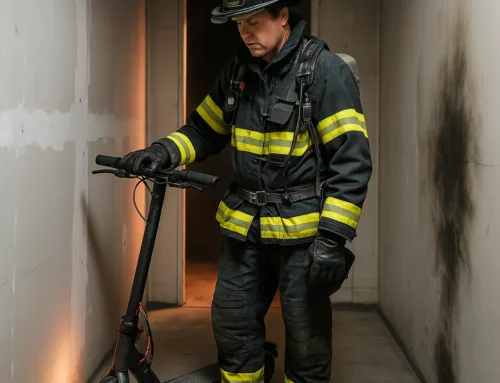Electric vehicles (EVs), e-bikes, and scooters are no longer futuristic novelties—they’re part of everyday life. In 2023 alone, more than 3.5 million electric and plug-in hybrid vehicles were registered across the U.S., a sixfold increase since 2016. But as their presence grows, so do the risks—particularly fires caused by lithium-ion batteries.
The video report by WBZ-TV Boston, titled “Are Firefighters Ready for Lithium-Ion Battery Fires?”, uncovers a crucial issue: many fire departments are underprepared to deal with this rapidly emerging hazard. With these battery fires burning hotter, longer, and often unpredictably, firefighters are racing to adapt.
AUTHOR
Editor
POSTED ON
May 15, 2025
Why Lithium-Ion Battery Fires Are So Dangerous
Lithium-ion batteries power everything from phones to Teslas, but when they fail—due to damage, overheating, or manufacturing defects—they can trigger thermal runaway, an uncontrollable chemical reaction that leads to extreme heat and toxic off-gassing.
Key Dangers Include:
- Reignition: Fires can appear extinguished, only to flare up again hours—or even days—later.
- Explosion Risk: As gases build up within the battery, pressure can explode outward with devastating force.
- Chemical Hazards: Released gases are flammable and potentially toxic.
- Water Requirements: Some EV fires require 3,000 to 5,000 gallons of water—10x more than a typical car fire.
In one example featured in the video, a battery fire reignited seven hours after initially being extinguished, and again five days later, illustrating the unique challenges firefighters face.
Incidents and Alarming Data
The problem isn’t isolated. According to data cited in the report:
- In San Francisco, lithium-ion battery fires more than doubled in the last four years.
- In New York, they’ve increased sevenfold, leading to 11 deaths and 269 injuries.
- The Berkeley Fire Department alone responded to six lithium battery fires in recent months.
These incidents often involve unattended charging, structural damage from explosions, or reignition long after crews have left the scene.
Fire Departments Struggling to Keep Up
Despite the rise in incidents, training hasn’t kept pace. WBZ-TV surveyed two dozen of the largest U.S. fire departments and found that:
- Only 38% had received hands-on training specific to lithium-ion battery fires.
- Many departments said their equipment and strategies were not yet fully vetted for these scenarios.
- There is no standardized approach across departments, leading to confusion and inconsistent responses.
Chris, a veteran firefighter and instructor, emphasized the issue:
“The tactics we use for gasoline vehicles don’t apply to EVs. We’re still learning what works.”
The Role of Automakers and Technology
Some progress is being made. General Motors (GM) has begun offering training programs for first responders. In just one year, GM trained over 5,000 firefighters at 25 different locations.
But with over 1 million firefighters in the U.S., this is just a start. Adding to the complexity, not all EVs are the same. Batteries are located in different areas depending on the manufacturer, which means firefighters must consult emergency response guides—manuals that currently number over 300.
GM is developing an internal solution to simplify access to vehicle-specific safety data, but third-party apps that aggregate this information are already proving helpful.

The Regulatory Blind Spot
When asked whether federal regulations are needed, a U.S. Fire Administration spokesperson admitted:
“Right now, we’re not even sure what to regulate, because we don’t know enough about the incidents happening.”
This gap between technology innovation and regulatory standards leaves first responders vulnerable. It also delays the adoption of best practices in training, equipment, and response strategy.
Real-Life Danger: The Off-Gassing Threat
One of the most dramatic incidents featured in the video occurred in Colorado, where firefighters were unaware that gases from a burning plug-in hybrid were building pressure inside a garage. The resulting explosion blew the doors off their tracks, nearly hitting a firefighter and knocking others off their feet.
This process, called off-gassing, often precedes a battery explosion. Without thermal cameras or gas sensors, first responders may not recognize the threat until it’s too late.
What Can Be Done Now?
While standardized national solutions are still being developed, there are clear steps that can be taken today:
For Fire Departments:
- Prioritize hands-on lithium-ion fire training
- Equip teams with thermal imaging and gas detection tools
- Collaborate with automakers and access emergency response apps
- Establish post-incident monitoring protocols for reignition risks
For EV Owners:
- Follow all manufacturer charging guidelines
- Do not charge vehicles near buildings or combustible materials
- If your EV has been in a crash, isolate it from other vehicles and structures until inspected
- Report overheating or strange smells immediately to your dealer or service center
Conclusion: A Call for Urgency and Innovation
As electric vehicles and battery-powered devices become more prevalent, lithium-ion battery fires are an increasingly urgent public safety issue. While the technology offers clear environmental and economic benefits, it also presents new challenges for first responders.
The lack of training and standardized procedures leaves firefighters exposed to preventable danger. Yet the efforts of companies like GM, combined with the urgency shown by local departments, point toward a solution. But we must act fast—technology will continue to evolve, and safety must keep up.
Firefighters on the front lines—and the communities they protect—can’t afford to wait.
Subscribe to our Newsletter
Be the first to know about the latest articles, safety tips, real stories, and industry updates related to lithium battery fire prevention
We do not spam. You can unsubscribe anytime





